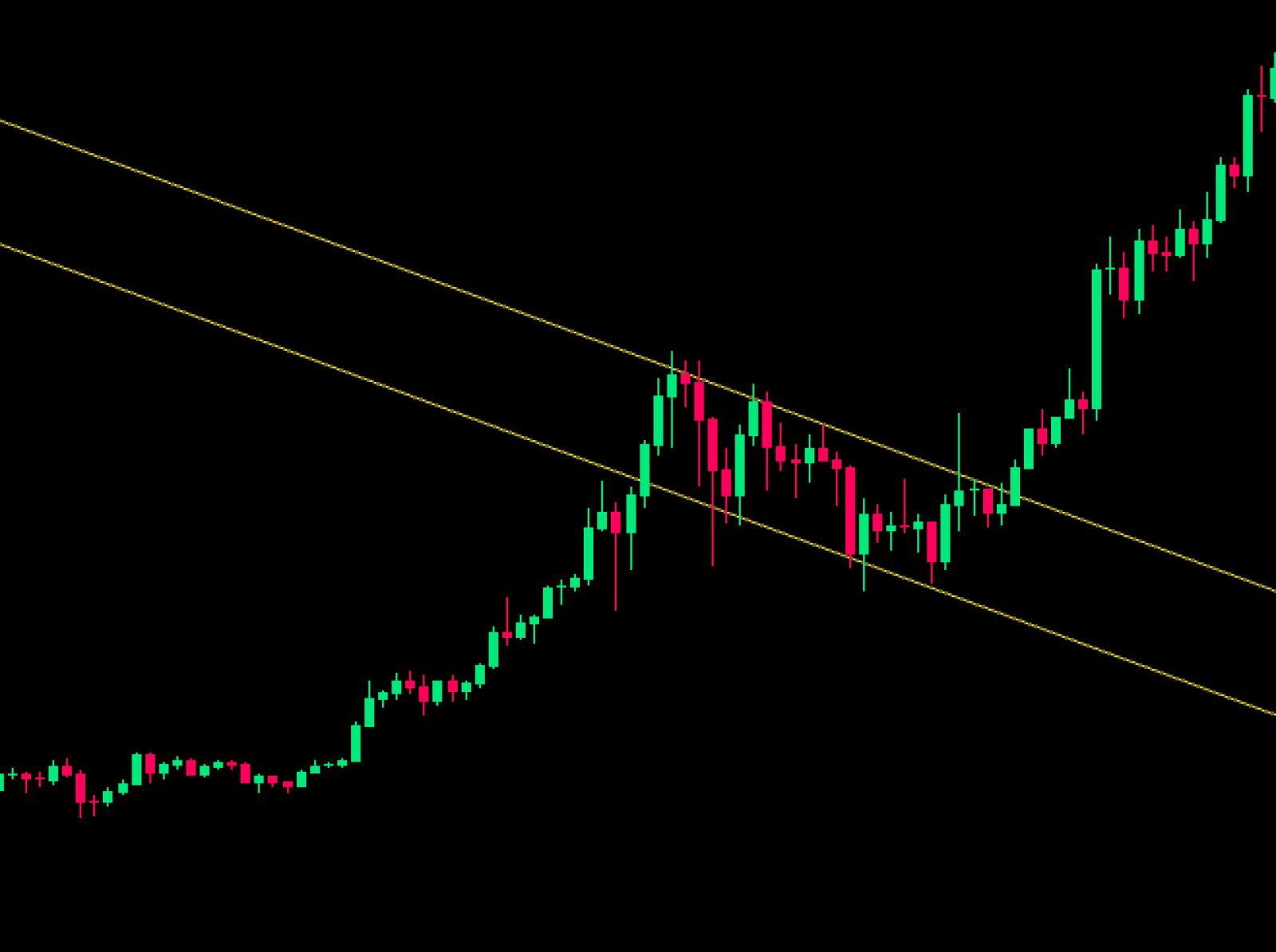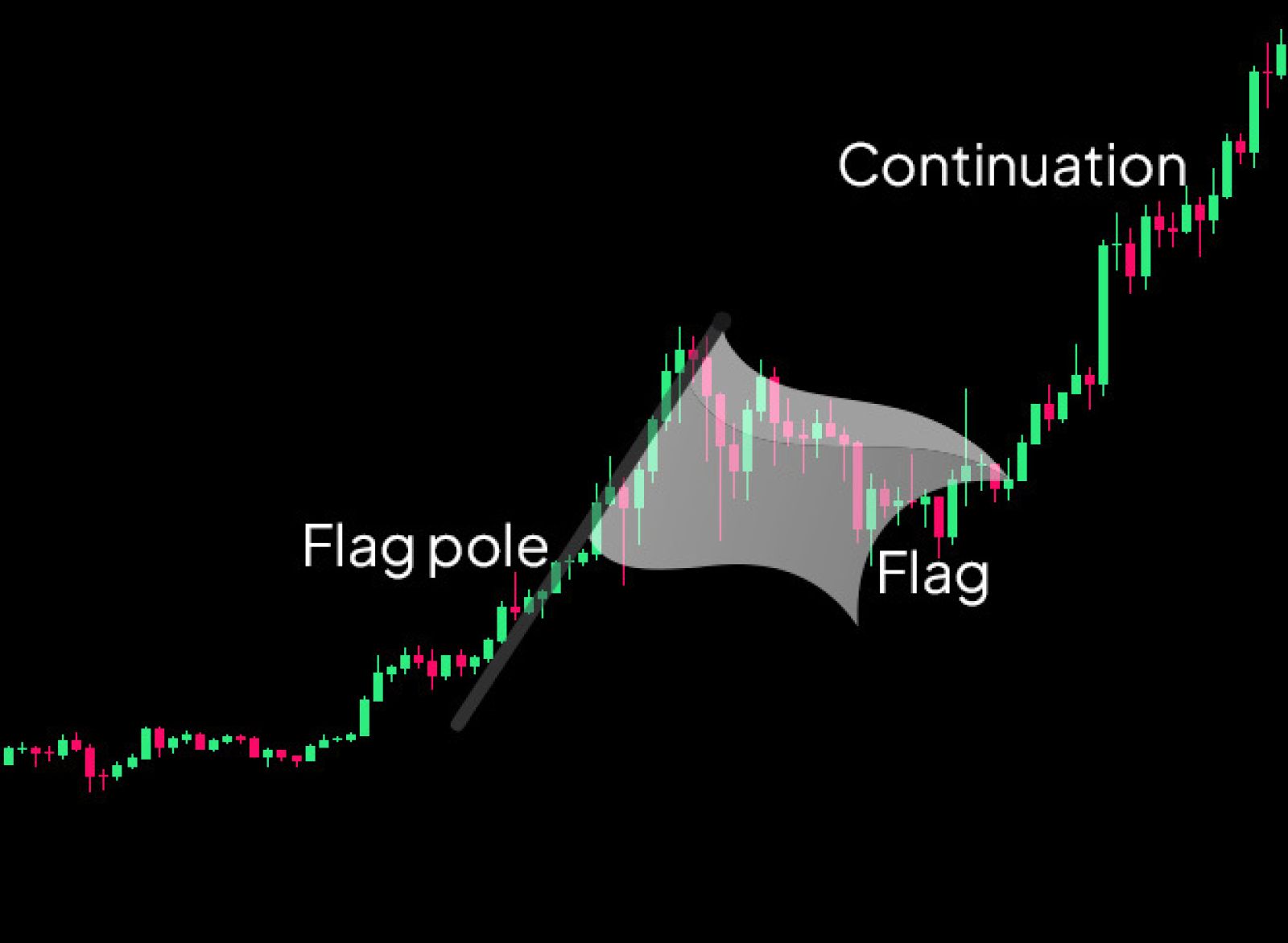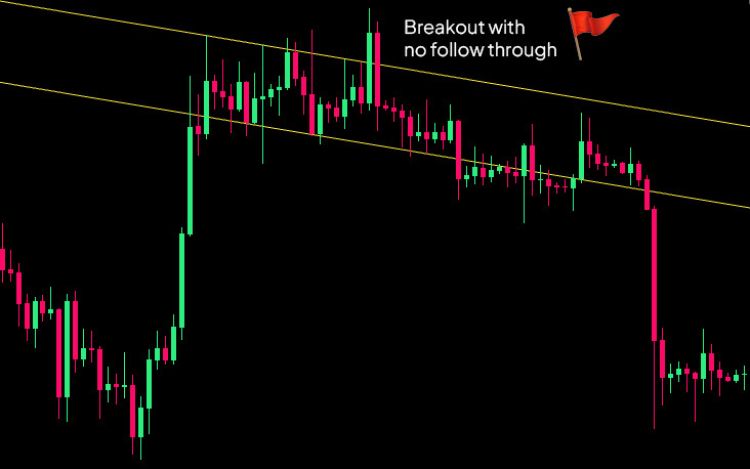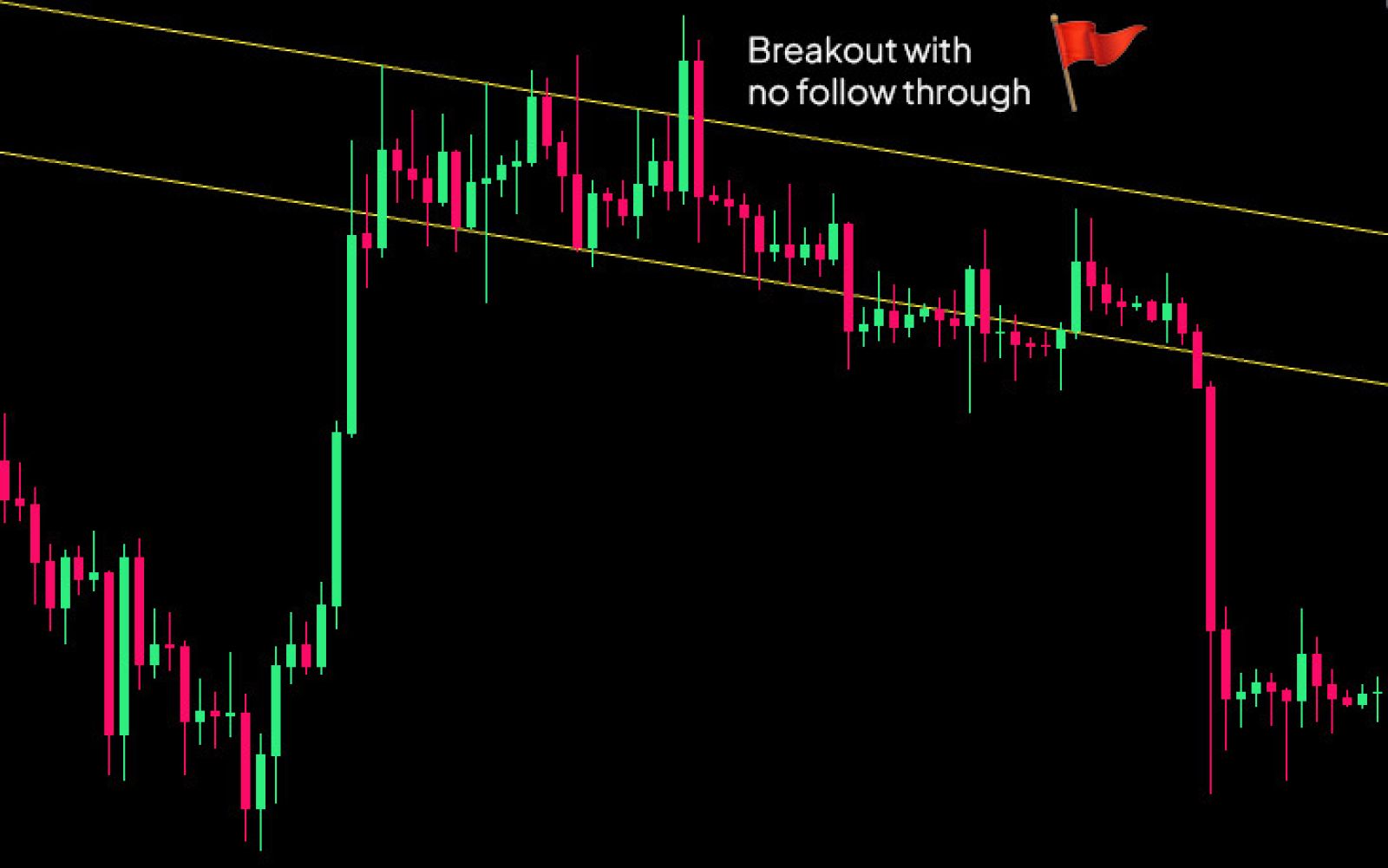Introduction
Have you ever noticed how nature loves patterns? The stock market, believe it or not, has its own. One of these is the Bull Flag - a formation that catches traders' eyes like a fluttering banner in the wind.
But let's be clear: this isn't some crystal ball prediction. It's just human behavior, sketched out in price movements. Understanding the Bull Flag won't turn you into a Wall Street wizard, but it might help you make sense of the market's ebbs and flows.
So why bother learning about it? Well, knowledge is useful, even if it just helps you avoid dumb mistakes with your cash. Plus, it's pretty cool to spot these patterns once you know what to look for.
Ready to unpack this market signal? To see how a simple shape might hint at a stock's next move? Let's explore the Bull Flag - where numbers dance with human nature, and savvy traders find their rhythm.
The Bull Flag: Anatomy of a Market Pattern
Let's break down the Bull Flag pattern, shall we? It's like learning a new language - once you get the basics, you start seeing it everywhere.
The Bull Flag is a chart pattern that suggests a stock's upward trend might continue after a brief pause. Think of it as the market catching its breath before another sprint. Here's what you need to know:
Definition
A Bull Flag is a short-term pattern that occurs during a strong uptrend. It shows a brief consolidation or pullback, followed by a continuation of the upward movement.
Visual description
Imagine a flagpole (the initial sharp price increase) with a flag attached (the consolidation period). The flag typically slants slightly downward or moves sideways.
Key components
- The pole: A steep, almost vertical rise in price
- The flag: A rectangular or slightly downward-sloping channel
- Volume: Often decreases during the flag formation
- Breakout: A surge above the upper trendline of the flag, ideally with increased volume
Remember, these patterns aren't guaranteed. They're more like hints from the market. But spotting them can give you a heads-up on potential price movements. Just don't get too cocky - the market loves to humble those who think they've got it all figured out.
Spotting a Bull Flag: The Art of Pattern Recognition
Identifying a Bull Flag is like bird watching. At first, they all look the same. But with practice, you start noticing the subtle differences. The key is to look for a strong uptrend followed by a brief, controlled pullback. Let's break down what to watch for and what to avoid.
The Telltale Signs
Look for a sharp upward move (the pole) followed by a parallel channel or slight downward drift (the flag). The flag should be smaller than the pole. Volume often decreases during the flag formation, then surges on the breakout.
Common Pitfalls
Don't mistake every consolidation for a Bull Flag. Reversal patterns can look similar but tell a different story. Be wary of flags that last too long or show wild price swings. A true Bull Flag is a tight, well-behaved formation.
Context is King
Remember, patterns don't exist in a vacuum. Consider the overall market trend, sector performance, and any relevant news. A Bull Flag in a strong uptrend is more reliable than one swimming against the current. It's not about finding perfect flags, but about understanding the market's narrative.
The Continuation Forecast: Reading the Market's Tea Leaves
Traders love Bull Flags because they offer a glimpse into the market's momentum. It's like watching a sprinter catch their breath before the final push. The pattern suggests that the buying pressure is still strong, but the market needed a breather. This pause often allows more buyers to join the party, potentially fueling the next leg up.
Here's why traders bet on this pattern and what outcomes they anticipate:
- Measurable targets: The height of the flagpole often indicates how far the price might move after the breakout. This gives traders a concrete goal.
- Clear entry points: The breakout from the flag provides a defined entry signal, making it easier to time trades.
- Manageable risk: The bottom of the flag serves as a natural stop-loss level, helping traders limit potential losses.
- Momentum continuation: A successful breakout can lead to a strong, sustained move in the original trend direction.
- False breakouts: Sometimes, the price might briefly break out only to reverse. This can trap overeager traders.
- Sideways drift: Occasionally, the price might exit the flag but continue moving sideways, neither confirming nor invalidating the pattern.
Remember, while Bull Flags can be powerful predictors, they're not crystal balls. The market has a knack for humbling even the most confident forecasters. Always pair pattern recognition with solid risk management.
Trading the Bull Flag: Walking the Tightrope
Trading a Bull Flag is like surfing. You need to time your entry, ride the wave, and know when to bail. It's a dance of patience and decisiveness, where being too early can be just as costly as being too late. The key is to wait for confirmation of the breakout while keeping a close eye on your risk.
Trading the Bull Flag: Step-by-Step
Here's a practical walkthrough on how to approach trading a Bull Flag pattern:
- Identify the pattern: Look for a strong uptrend (the pole). Spot the consolidation period (the flag). Confirm decreasing volume during the flag formation.
- Set up your trade: Draw trendlines along the flag's upper and lower boundaries. Calculate the flagpole's height for a potential price target.
- Wait for the breakout: Watch for a price move above the upper trendline. Confirm with increased volume.
- Enter the trade: Place a buy order slightly above the breakout point, or use a limit order at the first pullback to the breakout level.
- Manage your risk: Set a stop loss just below the lower trendline of the flag. Consider a time stop if the flag extends too long.
- Define your exit strategy: Set a profit target using the flagpole height projected from the breakout point, or use a trailing stop to capture potential extended moves.
- Monitor and adjust: Watch for signs of weakness or strength. Be ready to exit if the pattern fails.
Remember, no strategy is foolproof. Always use proper position sizing and never risk more than you can afford to lose. The market doesn't owe you anything – respect it, and it might just respect you back.
“The market is a device for transferring money from the impatient to the patient.”
When Bull Flags Fail: The Market's Curveballs
Even the most promising Bull Flags can fizzle out. It's like watching a perfect wave form, only to see it collapse before you can ride it. Understanding why these patterns fail is just as important as knowing how to trade them.
The Anatomy of a Failed Flag
- False breakouts: Sometimes the price breaks above the flag, tricking traders into buying, only to reverse sharply. This often happens when there's not enough buying pressure to sustain the move.
- Reversal patterns: What starts as a Bull Flag can morph into a reversal pattern. If the 'flag' keeps drifting lower, it might be signaling a change in trend rather than a continuation.
Market Mood Swings
- External shocks: News events, economic data, or global incidents can disrupt even the most perfect-looking patterns. The market doesn't exist in a vacuum.
- Sector rotation: Sometimes, money flows out of one sector into another, disrupting ongoing trends regardless of individual stock patterns.
- Overall market sentiment: A Bull Flag in a single stock might fail if the broader market turns bearish. It's tough to swim against the tide.
Remember, patterns are probabilities, not certainties. They're like weather forecasts - useful, but not infallible. Always be prepared for the unexpected, and never fall in love with a trade. The market has a way of humbling even the most confident traders.
Wrapping Up: The Bull Flag in Perspective
As we reach the end of our journey through the Bull Flag pattern, let's take a moment to reflect on what we've learned. Like constellations in the night sky, these patterns can guide us - but they're not the whole story.
Key Insights to Remember
- Pattern Recognition: Bull Flags are about momentum pauses, not reversals. Look for strong uptrends followed by tight consolidations.
- Context Matters: Always consider the bigger picture. A flag in a sea of bearish indicators is like a snowball in summer - it probably won't last long.
- Risk Management is King: No pattern is foolproof. Use stop losses and position sizing to protect your capital.
The Reality Check
Here's the thing: patterns aren't crystal balls. They're more like weather forecasts - useful tools that improve your odds, but not guarantees. Sometimes it rains when sun was predicted, and sometimes Bull Flags turn into bearish reversals.
Trading is a game of probabilities, not certainties. Treat each trade as an experiment, where you're testing a hypothesis rather than betting on a sure thing. Stay humble, stay curious, and always be ready to learn from both your successes and failures.
Remember, the market is a great teacher, but the tuition can be expensive if you're not careful. Respect the patterns, but respect your risk management even more. Happy trading, and may the odds be ever in your favor!





















